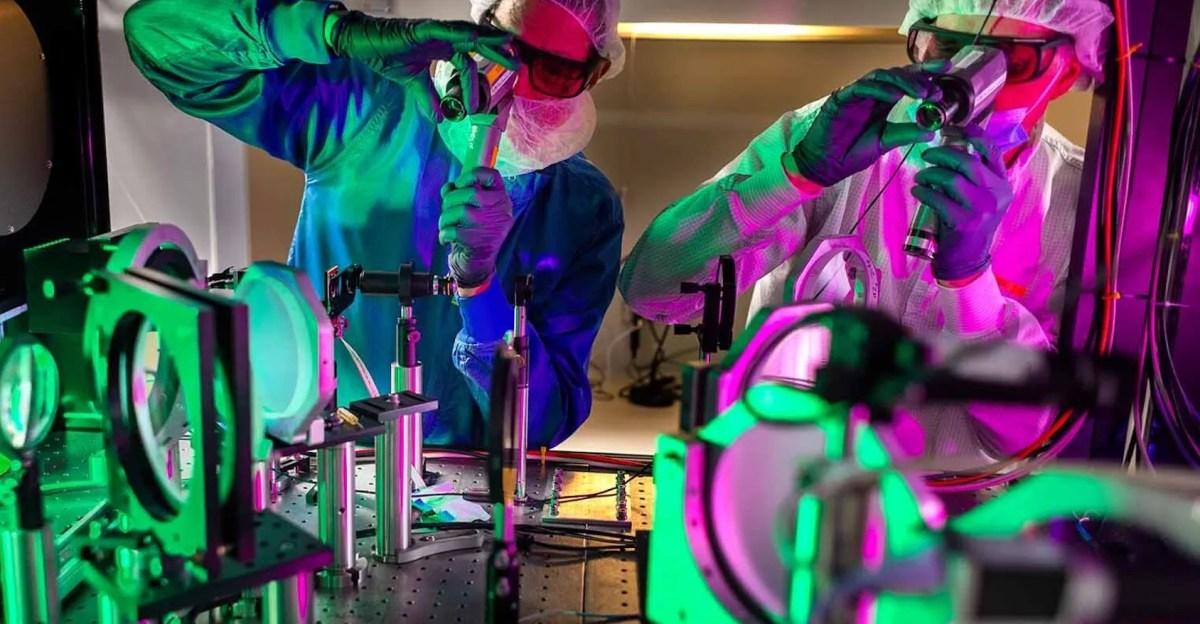Technology
- Home
- Technology
- News
The most powerful laser in the US recently produced 2 quadrillion watts of power
The University of Michigan has announced that its Zettawatt-Equivalent Ultrashort pulse laser System (ZEUS) produced 2 petawatts, or 2 quadrillion watts of power during its first experiment. That’s more than “100 times the global electricity power output,” ac…

Published 7 ماہ قبل on مئی 23 2025، 5:00 صبح
By Web Desk

The University of Michigan has announced that its Zettawatt-Equivalent Ultrashort pulse laser System (ZEUS) produced 2 petawatts, or 2 quadrillion watts of power during its first experiment. That’s more than “100 times the global electricity power output,” according to the university, but don’t expect it to be harnessed to recreate the Death Star. Those intensely powerful blasts last just 25 quintillionths of a second long, and will be used for experiments in various areas of research including medicine, quantum physics, and materials science.
Funded by the US National Science Foundation, ZEUS cost $16 million to build and includes components like 7-inch sapphire crystals infused with titanium atoms that took over four years to manufacture. “The size of the titanium sapphire crystal we have, there are only a few in the world,” says ZEUS’ project manager, Franko Bayer.
Operating ZEUS isn’t as easy as pressing a button on a handheld laser pointer. The power of an initial infrared pulse from a laser is increased using pump lasers that increase its energy. The power is gradually increased through four rounds of these pump lasers, but to ensure the pulse “doesn’t get so intense that it starts tearing the air apart,” it passes through optical devices called diffraction gratings that stretch it out.
The pulse ends up being 12 inches across and a few feet long, but eventually it enters vacuum chambers where additional gratings flatten it down to just 0.8 microns wide so its maximum power intensity can be delivered to experiments.
The first experiment, conducted by Franklin Dollar, a professor of physics and astronomy at the University of California, Irvine, targeted the laser pulse at a cell containing helium. The collision “produces plasma, ripping electrons off the atoms so that the gas becomes a soup of free electrons and positively charged ions. Those electrons get accelerated behind the laser pulse-like wakesurfers close behind a speedboat, a phenomenon called wakefield acceleration.”
The experiment is designed to eventually produce electron beams that are as powerful as those created by particle accelerators but without the need for expensive hardware installations that are often hundreds of meters in length.
Housed in a facility the size of a school gymnasium at the university’s Gérard Mourou Center for Ultrafast Optical Science, ZEUS is the successor to the center’s HERCULES laser that reached a maximum power output of 300 terawatts in 2007. First announced in 2022, ZEUS’ current power output is roughly double the peak power of other lasers in the US, and it’s designed to eventually deliver up to 3 petawatts.
But while ZEUS is the most powerful laser in the US, it’s still less powerful than the laser at the European ELI-NP laboratory in Măgurele, Romania that peaks at 10 petawatts of power.
Bondi Beach shooting: Australia hails ‘hero’ Ahmed who stopped gunman
- 16 hours ago
Under-19 Asia Cup: India beat Pakistan by 90 runs
- 16 hours ago
Security forces kill 13 Khwarij in two separate engagements in KP: ISPR
- 16 hours ago

Pakistan condemns attack on UNISFA in Kadugli, Sudan
- 16 hours ago

How do you know if you’re wasting your life?
- 8 hours ago
Source: Gray, Nats reach deal to avoid arbitration
- a day ago
NHL board of governors eager to see more 'color vs. color' jersey matchups
- a day ago
Jays president Shapiro given new 5-year deal
- a day ago
Diaz picked Dodgers because 'I'm looking to win'
- a day ago
Sources: Rangers address needs with 3 signings
- a day ago
Australian PM declares Sydney shooting a ‘terrorist’ attack targeting Jews
- 15 hours ago
Pakistan aims to become model in digital assets regulation: Bilal saqib
- 16 hours ago
You May Like
Trending













